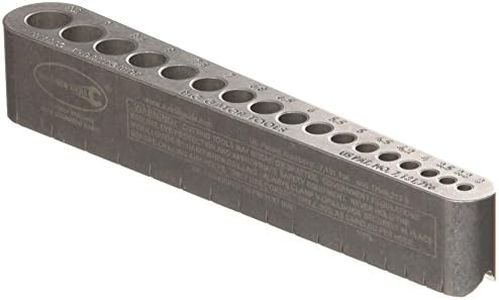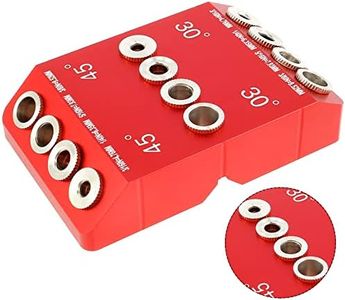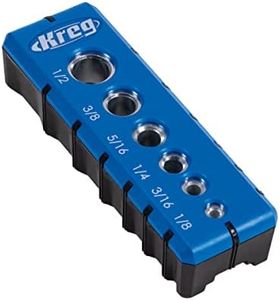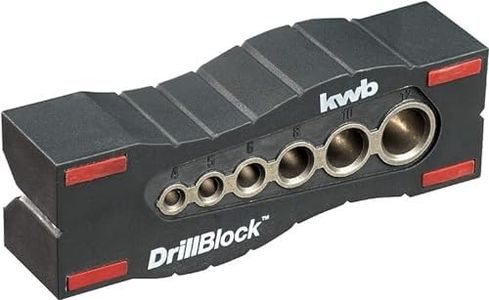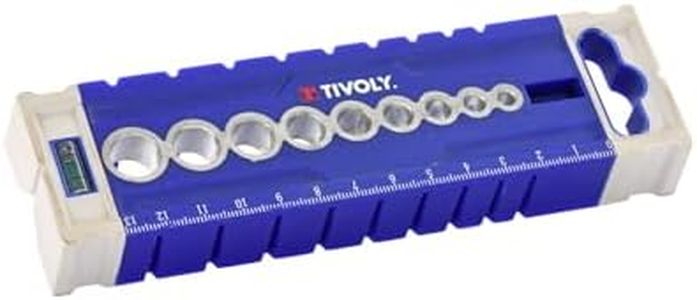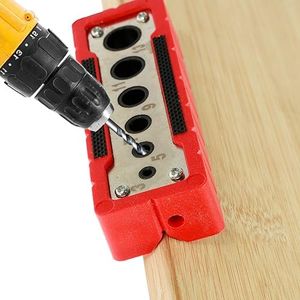We Use CookiesWe use cookies to enhance the security, performance,
functionality and for analytical and promotional activities. By continuing to browse this site you
are agreeing to our privacy policy
8 Best Portable Drill Guides
From leading brands and best sellers available on the web.By clicking on a link to a third party's website, log data is shared with that third party.
Buying Guide for the Best Portable Drill Guides
Choosing the right portable drill guide can make your drilling tasks much easier and more precise. Drill guides help ensure that your holes are straight and accurate, even when you’re working without a drill press or need to work on awkward surfaces. To find the best drill guide for your needs, it’s important to understand the main features and specifications so you can match them with the type of work you plan to do.Drill Guide CapacityDrill guide capacity refers to the maximum diameter of the drill bit that can be used with the guide. This is important because it determines what kinds of drilling tasks you can handle. Guides with a small capacity (around 1/4 inch) are best suited for light-duty jobs and smaller holes, such as for electronics or craft work. Medium capacities (up to 1/2 inch) offer more flexibility for general woodworking and household projects. Higher-capacity guides (up to 5/8 inch or more) are generally for heavy-duty jobs and thicker materials. Consider what size holes you'll commonly need and choose a guide with enough capacity for those drill bits.
Base Material and StabilityThe base of a portable drill guide can be made from plastic, aluminum, or steel, and its stability affects how steady your drill stays during use. Plastic bases are lightweight and portable but may not be as stable. Aluminum bases offer a good balance of weight and stability, making them suitable for most home users. Steel bases are very sturdy and best if you need extra stability for heavy-duty work. If you plan to use your guide on uneven surfaces or larger projects, a heavier, more stable base will keep your drill straighter and reduce errors.
Angle AdjustmentAngle adjustment is a feature that lets you tilt the drill guide to bore holes at different angles, not just straight down. This is important if you need to make angled holes for joinery, doweling, or decorative work. Some guides allow only fixed angles, while others offer variable adjustment (usually from 0° to 45° or even 60°). If you do mostly straight drilling, simple guides without much adjustment are fine. If you need to drill at various angles, look for a model with easy-to-use angle adjustment features.
Chuck CompatibilityChuck compatibility means which types of drills can fit into the guide, often determined by the clamp or holder size on the guide. Some guides only work with specific drill sizes or shapes, while others are more universal and can clamp a range of handheld drills. If you own one drill already, make sure your guide fits it snugly. If you use multiple drills, a universal-fitting guide will be more versatile for your projects.
Depth Stop MechanismA depth stop lets you control how deep your drill bit goes, an important feature to prevent over-drilling or to drill repeated holes at the same depth. Some drill guides have simple adjustable collars, while others use graduated scales or locking arms. For tasks like doweling, shelf pin holes, or repeated drilling, a reliable depth stop is very helpful. If this is important for your tasks, make sure the depth mechanism is easy to set and holds firm during drilling.
Portability and SizePortability is how easy it is to transport and store your drill guide. Compact guides are easier to carry and store, great for small homes or on-the-go repairs, but they may have limited capacity or stability. Larger guides offer more features, like increased stability or more adjustment options, but they’re bulkier. Consider where and how you’ll use the guide—if you’re often moving between sites, a smaller, lighter model may be best.
